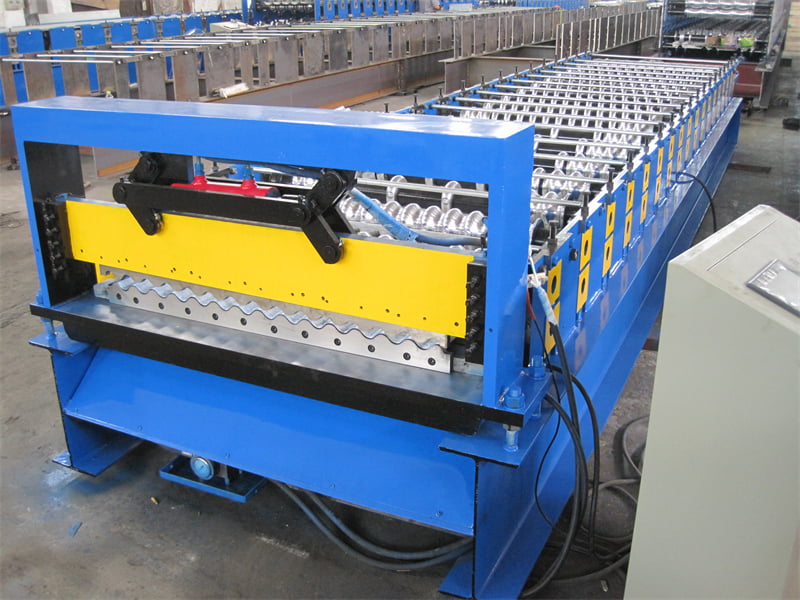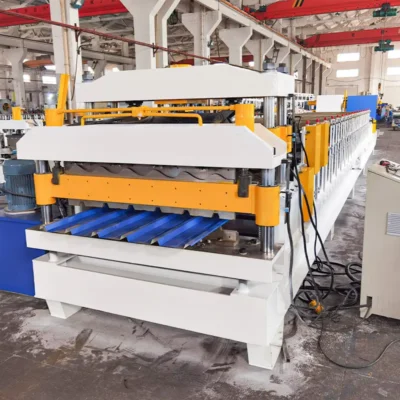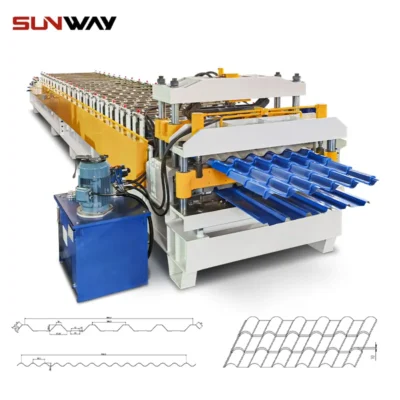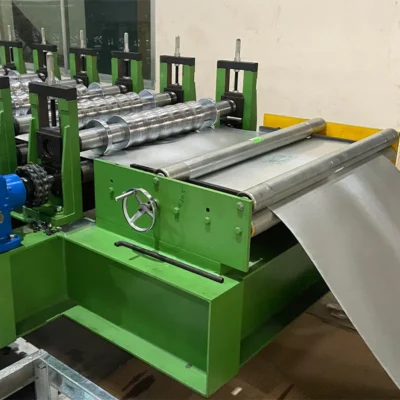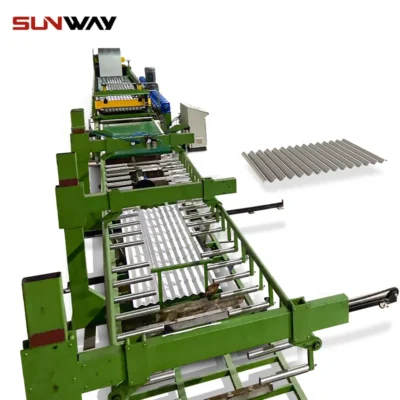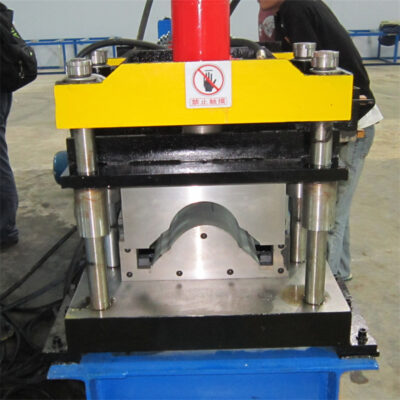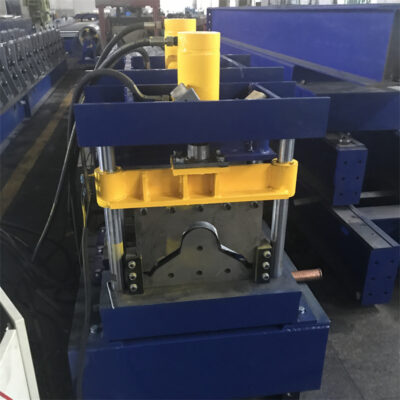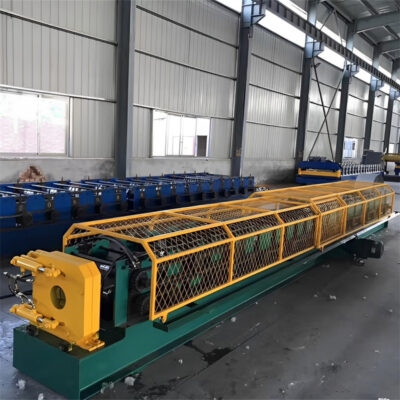What is Corrugated Roll Forming Machine?
A Corrugated Roll Forming Machine is a mechanical device that is used to produce corrugated materials, which are commonly used in the packaging industry. These machines consist of a series of rollers that are designed to form a flat material, such as cardboard or metal, into a corrugated shape. This corrugated shape consists of a series of ridges and valleys, which provide the material with additional strength and rigidity.
The process of using a Corrugated Roll Forming Machine begins with the flat material being fed into the machine. The rollers then begin to shape the material into the desired corrugated pattern, which can be customized to meet the specific needs of the product being produced. Once the material has been corrugated, it can be cut, folded, and assembled into packaging materials, such as cardboard boxes, shipping containers, and other similar products.
One of the primary advantages of using a Corrugated Roll Forming Machine is that it can produce large quantities of corrugated materials quickly and efficiently. This makes it an ideal solution for businesses that need to produce large quantities of packaging materials on a regular basis. Additionally, these machines are highly versatile, allowing them to be used with a variety of different materials, including cardboard, metal, and plastics.
Another advantage of Corrugated Roll Forming Machines is that they can be customized to meet the specific needs of the customer. This includes the ability to create different corrugation patterns, adjust the thickness of the material, and customize the size and shape of the finished product. This allows businesses to create unique packaging materials that are tailored to their specific needs and requirements.
Overall, Corrugated Roll Forming Machines are an essential tool for businesses in the packaging industry. With their ability to produce high-quality and cost-effective corrugated materials quickly and efficiently, they provide a vital service to companies that need to package and ship their products securely and safely.
Corrugated Roll Forming Machine Features
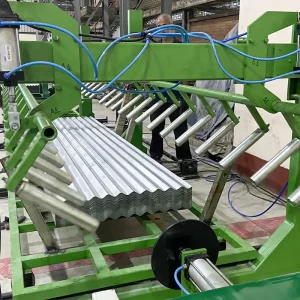
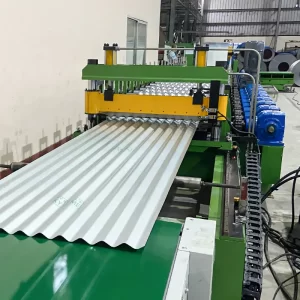
Corrugated Roll Forming Machines are mechanical devices used in the packaging industry to produce corrugated materials, which are commonly used in the production of cardboard boxes, shipping containers, and other similar products. These machines are designed to shape flat materials, such as cardboard, into corrugated shapes consisting of a series of ridges and valleys. Here are some key features of Corrugated Roll Forming Machines:
- Customizable Corrugation Patterns: One of the key features of Corrugated Roll Forming Machines is that they can produce a wide variety of corrugation patterns. This makes it possible to customize the shape and structure of the corrugated material to meet the specific needs of the product being produced.
- High Production Capacity: Corrugated Roll Forming Machines are designed for high-volume production, with the ability to produce large quantities of corrugated materials quickly and efficiently. This makes them ideal for businesses that need to produce large volumes of packaging materials on a regular basis.
- Versatility: Corrugated Roll Forming Machines are highly versatile, allowing them to be used with a variety of different materials, including cardboard, metal, and plastics. This makes them a valuable asset for businesses that work with a variety of materials.
- Customizable Thickness: Corrugated Roll Forming Machines can also produce materials with varying thicknesses, allowing businesses to create packaging materials that are tailored to their specific needs.
- Easy to Use: Modern Corrugated Roll Forming Machines are designed to be easy to use, with intuitive controls and user-friendly interfaces that make it easy to operate the machine and adjust settings as needed.
- Energy Efficiency: Many Corrugated Roll Forming Machines are designed to be energy-efficient, using less energy and reducing the environmental impact of the production process.
Overall, Corrugated Roll Forming Machines are an essential tool for businesses in the packaging industry, providing the ability to produce high-quality corrugated materials quickly and efficiently while offering customization options to meet specific business needs.
Process Flow of Corrugated Roll Forming Machine

The process flow of a typical Corrugated Roll Forming Machine involves several stages, including:
- Decoiling: The flat material, such as cardboard or metal, is unwound from a coil using a decoiler. The decoiler feeds the material into the machine at a controlled rate, ensuring that the material is fed evenly into the machine.
- Forming: The material is then passed through a series of rollers in the main forming machine. These rollers shape the material into the desired corrugated pattern, with different rollers used to create different patterns. The rollers are typically adjustable, allowing the user to customize the corrugation pattern.
- Cutting: Once the material has been formed into the corrugated pattern, it is cut to the desired length using a hydraulic cutter. The cutter is typically operated using a foot pedal, allowing the user to control the cutting process.
- Output Table: The cut corrugated sheets are then conveyed to the output table, where they are stacked and collected for further processing or packaging.
- Hydraulic Oil Box: The hydraulic oil box is used to provide hydraulic power to the cutter and other hydraulic components of the machine. This ensures that the machine operates smoothly and efficiently.
- Control Cabinet: The control cabinet houses the electronic controls for the machine, including the control panel, which allows the user to adjust the speed, pressure, and other settings of the machine.
Overall, the Corrugated Roll Forming Machine is a highly automated process, with the hydraulic cutter, decoiler, main forming machine, hydraulic oil box, and control cabinet working together to produce high-quality corrugated materials quickly and efficiently.
Machine Configurations of Corrugated Roll Forming Machine
| 1. Uncoiler |
2. Guide feeder
|
| 3. roll former |
4. Hydraulic machine
|
| 5. PLC Control System |
6. Hydraulic station
|
|
7. Output conveyor
|
The machine configurations of a typical Corrugated Roll Forming Machine may vary depending on the specific model and application. However, here is an example of the machine configurations that are commonly found in the industry:
- Uncoiler: The uncoiler is the first stage of the machine and is used to hold and feed the flat material into the machine. It consists of a motorized spindle and a brake system that controls the tension of the material.
- Guide feeder: The guide feeder is used to ensure that the material is fed into the machine in a straight and accurate manner. It consists of a set of rollers and guide plates that help to guide the material into the machine.
- Roll former: The roll former is the core component of the machine and is used to shape the material into the desired corrugated pattern. It consists of a set of rollers that are arranged in a specific configuration to achieve the desired pattern.
- Hydraulic machine: The hydraulic machine is used for cutting the corrugated material to the desired length. It is typically operated using a foot pedal or a control panel, and it consists of a hydraulic cylinder, a cutting blade, and a set of guides.
- PLC Control System: The PLC control system is used to control the operation of the machine and ensure that it operates smoothly and efficiently. It consists of a programmable logic controller (PLC) and a human-machine interface (HMI) that allows the operator to monitor and adjust the settings of the machine.
- Hydraulic station: The hydraulic station is used to provide hydraulic power to the hydraulic components of the machine, including the hydraulic cylinder and the cutting blade. It consists of a hydraulic pump, a motor, and a set of valves.
- Output conveyor: The output conveyor is used to transport the finished corrugated material from the machine to the packaging or processing area. It consists of a set of rollers or a belt conveyor that moves the material along.
Overall, these machine configurations work together to produce high-quality corrugated materials quickly and efficiently, and they can be customized to meet the specific needs of the customer.
Profile Drawings of Corrugated Roll Forming Machine for Reference

Photos of Corrugated Roll Forming Machine For Reference
Hydraulic uncoiler/Manual Uncoiler
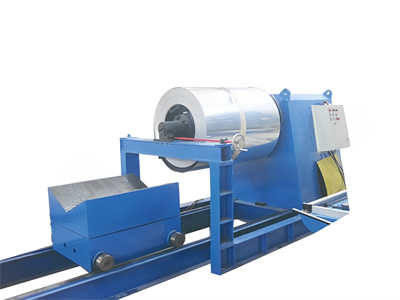
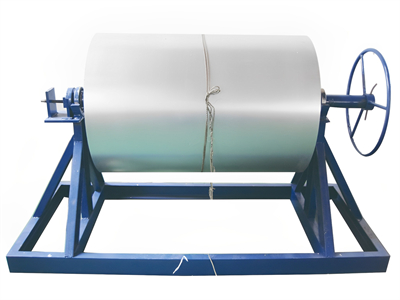
Uncoilers are an important component of a Corrugated Roll Forming Machine, used to feed the flat material into the machine. There are two types of uncoilers – hydraulic and manual. Hydraulic uncoilers are an advanced and automated option that uses hydraulic power to control the tension of the material as it is fed into the machine. They are ideal for high-volume production where consistency and efficiency are essential. Manual uncoilers are a simpler and more affordable option that rely on manual labor to control the tension of the material as it is fed into the machine. They are typically used for low-volume production and are less efficient than hydraulic uncoilers. The choice between hydraulic and manual uncoilers depends on the specific needs of the production process, with hydraulic uncoilers being the better option for high-volume production and manual uncoilers being more suitable for low-volume production.
Roll forming machine
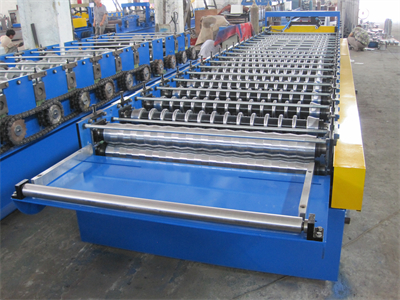

Hydraulic cutter
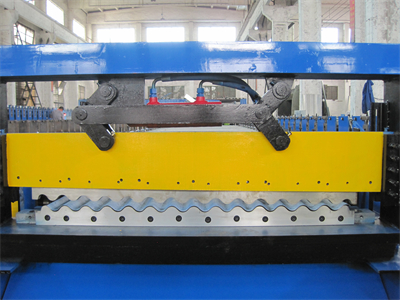
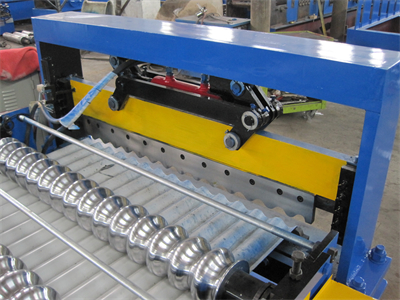
A hydraulic cutter is a crucial component of a Corrugated Roll Forming Machine that is used to cut the corrugated material to the desired length. It consists of a hydraulic cylinder, a cutting blade, and a set of guides that keep the material in place during cutting. Hydraulic cutters are more efficient, precise, and faster than mechanical cutters, making them an ideal choice for cutting thick and heavy materials. They are operated using a foot pedal or control panel, and they provide the cutting precision and efficiency needed to produce high-quality corrugated materials.
Products on project
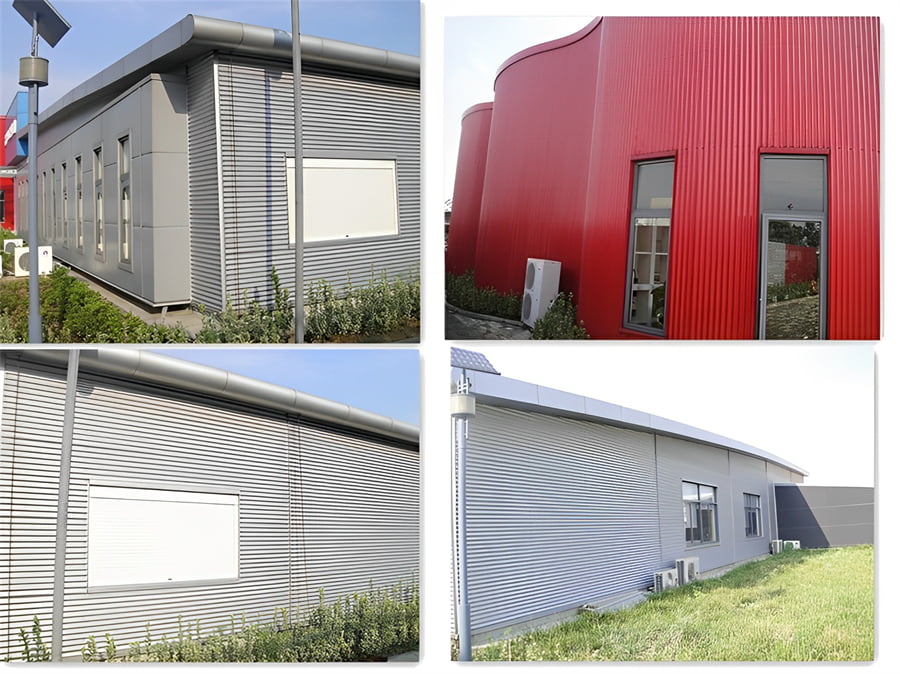
Applications of Corrugated Roll Forming Machine
Corrugated Roll Forming Machines are widely used in the packaging industry to produce corrugated materials for cardboard boxes, shipping containers, and other packaging materials. However, these machines also have a range of applications beyond packaging. Some of the common applications of Corrugated Roll Forming Machines include:
- Roofing and Wall Cladding: The finished products from a Corrugated Roll Forming Machine can be used as roofing and wall cladding materials for various buildings, including gymnasiums, airports, theaters, factories, warehouses, garages, exhibition centers, and more. The corrugated pattern provides strength and rigidity, making them ideal for use in construction.
- Automotive Industry: Corrugated materials produced by these machines are also used in the automotive industry, primarily for manufacturing body panels and other structural components.
- Furniture Industry: Corrugated materials are used in the furniture industry to produce lightweight and durable pieces of furniture, such as chairs, tables, and cabinets.
- Agricultural Industry: Corrugated materials are also used in the agricultural industry for various applications, including greenhouse construction, irrigation channels, and animal shelters.
Overall, the applications of Corrugated Roll Forming Machines are diverse, with the finished products being used in various industries and applications where strength, durability, and customization options are essential.
Our Corrugated Roll Forming Machine is a vital tool for businesses that need to produce large volumes of corrugated materials for various applications. Contact us today to learn more about our machine and how it can benefit your business.
what is corrugated sheet roll forming machine?
A corrugated sheet roll forming machine is a piece of equipment used in the manufacturing process of corrugated sheets. Corrugated sheets are widely used in the construction industry for roofing, siding, and various other applications. The roll forming machine is specifically designed to produce corrugated sheets in a continuous, automated process.
The machine consists of a series of rollers and other components that shape flat metal coils into corrugated profiles. Here’s a general overview of how the process works:
- Coil Feeding: The machine takes in flat metal coils, usually made of steel or aluminum, as the raw material. These coils are loaded onto a decoiler, which feeds the metal into the roll forming machine.
- Roll Forming: The metal passes through a series of rollers, each set strategically positioned to bend and shape the metal into the desired corrugated profile. The rollers have specially designed contours that gradually transform the flat metal into the corrugated shape.
- Cutting: Once the metal has been formed into the corrugated shape, a cutting mechanism is employed to cut the sheet to the desired length. The cutting can be performed in-line with the roll forming process or as a separate step after the sheet has been formed.
- Stacking or Packaging: The finished corrugated sheets are typically stacked or packaged for further transportation or processing.
The roll forming machine is usually equipped with various controls, such as speed adjustment, length measurement, and cut-off operation, to ensure accurate and efficient production. The specific design and features of the machine can vary depending on the manufacturer and the desired output specifications.
Overall, a corrugated sheet roll forming machine plays a crucial role in the mass production of corrugated sheets by automating the process and ensuring consistent quality and precision in the final product.
influence factors of corrugated roll forming machine price
- Machine Size and Capacity: The size and production capacity of the roll forming machine play a significant role in determining its price. Larger machines with higher production capacities are generally more expensive due to their higher material and manufacturing costs.
- Complexity of the Design: The complexity of the corrugated sheet profile and the number of forming stations required can affect the machine’s price. More intricate designs and a greater number of stations may require advanced machinery and more precise engineering, leading to a higher cost.
- Material Type and Thickness: The type and thickness of the metal being processed can impact the price of the roll forming machine. Machines designed to handle thicker or harder materials may require stronger components, more robust construction, and specialized tooling, leading to increased costs.
- Customization and Additional Features: If you require specific customization or additional features in the roll forming machine, such as special cutting mechanisms, multiple profile options, or advanced control systems, the price may increase accordingly.
- Brand and Manufacturer: The reputation, brand, and manufacturing expertise of the company producing the roll forming machine can also influence the price. Well-established and renowned manufacturers may charge a premium for their products compared to lesser-known or new manufacturers.
- Market Demand and Currency Fluctuations: Market demand and currency fluctuations can affect the pricing of roll forming machines. If there is high demand or limited supply, the prices may be higher. Additionally, exchange rate fluctuations can impact the cost of imported machines.
- After-Sales Support and Warranty: The availability and quality of after-sales support, technical assistance, and warranty provided by the manufacturer can impact the machine’s price. Machines with comprehensive support and longer warranty periods may have a higher upfront cost.
function of corrugated roof panel roll forming machine
- Roll Forming: The primary function of the machine is to shape the flat metal coil into a corrugated profile. It achieves this by passing the metal through a series of rollers with specially designed contours. The rollers gradually bend and shape the metal, creating the characteristic corrugated pattern.
- Material Feeding: The machine is equipped with a decoiler or material feeding system that holds the flat metal coil. It feeds the metal into the roll forming section, ensuring a continuous and smooth material flow.
- Cutting: Once the metal has been formed into the corrugated profile, the roll forming machine includes a cutting mechanism to trim the panels to the desired length. This can be a shear-type cutter or a flying cut-off system that cuts the panels to the required size.
- Profile Customization: Depending on the specific design and capabilities of the machine, it may offer options for profile customization. This can include adjustable roller settings to produce different corrugation heights, widths, or spacing, allowing for flexibility in creating various corrugated roof panel designs.
- Control System: The machine is typically equipped with a control system that allows operators to adjust various parameters such as line speed, length measurement, and cutting operation. The control system ensures precise and consistent production, allowing for efficient operation and quality control.
- Stacking or Packaging: After the panels are cut to size, the roll forming machine may have provisions for stacking or packaging the finished corrugated roof panels. This simplifies the handling and transportation of the panels and facilitates further processing or delivery.
What Are The Benefits Of Using A Corrugated Roll Forming Machine for sale?

